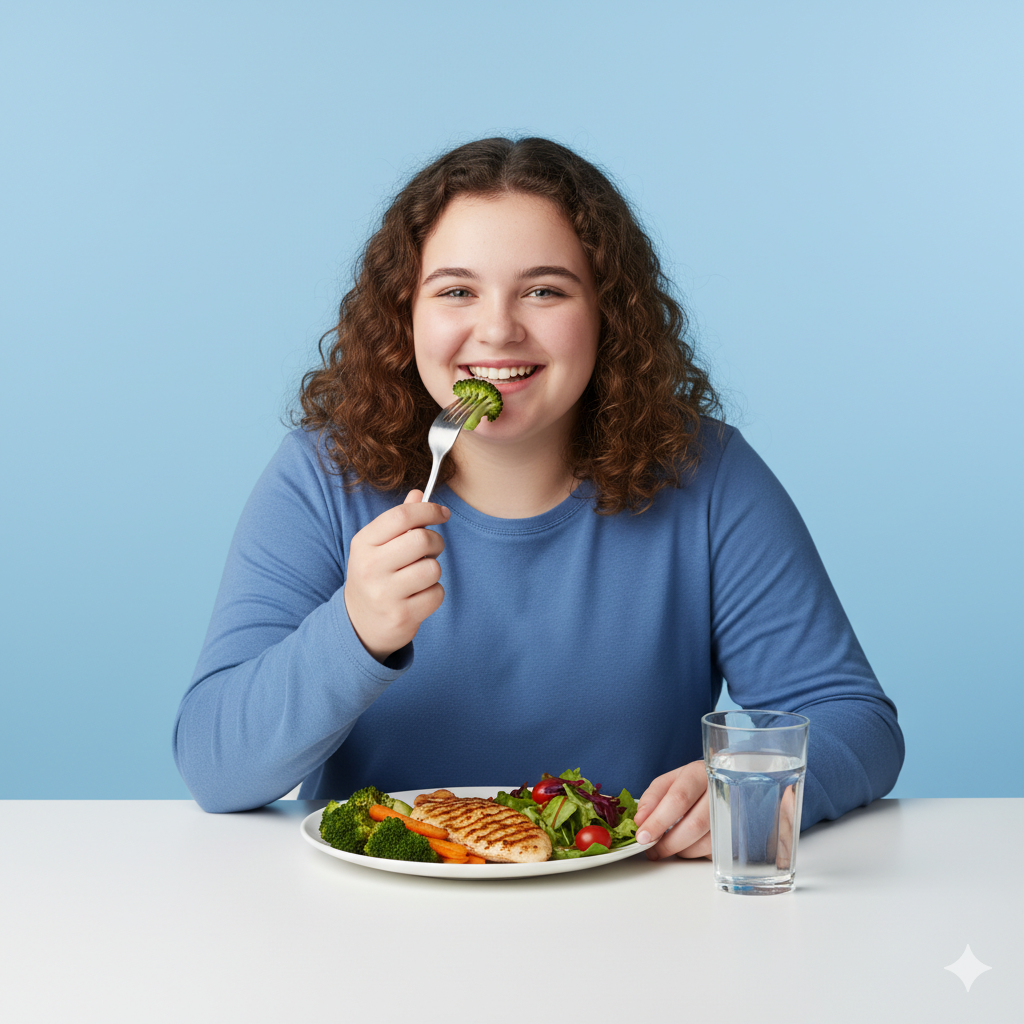Why Kids Eat Too Fast — And How to Help Them Slow Down
Hey Nouri Team
November 3, 2025
7


Key takeaways
.svg)
.svg)
.svg)
If dinner feels like a race and your child always wins, you’re not imagining it. Some kids seem to inhale their food in record time and then ask for seconds before you have even taken your second bite. You might find yourself repeating, “Slow down,” only to be completely ignored.
But here’s the truth: this isn’t just a quirky habit or a passing phase. Eating too quickly can cause real problems. The good news is that there are simple and playful ways to help your child slow their pace, reconnect with hunger cues, and enjoy meals in a more mindful and satisfying way.
What’s Actually Happening and Why It Can Be a Problem
When kids eat quickly, their bodies don’t have enough time to catch up with what they are doing. It usually takes around 15 to 20 minutes for the stomach to send a signal to the brain that says, “I’m full.” If your child finishes a full meal in just five minutes, their brain is still catching up. By the time it gets the message, they may have already eaten much more than they actually needed.
This delay can lead to a chain reaction. Eating past fullness becomes the norm, digestion can feel uncomfortable, and over time, children lose the ability to tune in to their natural hunger and fullness cues. When this becomes a habit, it may contribute to overeating, weight gain, and a more disconnected relationship with food. Meals stop being about flavor, texture, or satisfaction and start being about simply getting full.
But food is about more than nutrition. Mealtime can be a moment to pause during a busy day, to share stories, laugh, and connect. When eating turns into a sprint, that chance for connection disappears.So how can you help a fast eater slow down without turning dinner into a power struggle? Here are four playful and practical strategies that actually work.
Four Ways to Help Kids Slow Down (Without Saying “Slow Down”)
1. Spark a Lively Conversation
One of the easiest and most enjoyable ways to help kids eat more slowly is to simply talk. When they are busy telling a story, asking questions, or laughing at your jokes, they naturally pause between bites. It is hard to chew while speaking, and that is exactly what makes it work.
Make the dinner table a space for storytelling and silliness. Ask about the highs and lows of the day, share strange animal facts, or come up with a question of the night, like “What superpower would you never want?” Not only does this help slow things down, it also makes meals something your kids actually look forward to.
2. Serve in Waves
Instead of loading the plate with everything at once, try starting with just one part of the meal. Begin with something light or nutrient-dense, like vegetables or a small starter. Once that is done, take a short break before serving the next part.
These natural pauses give your child a moment to reflect. Am I still hungry? Do I really want more? It also helps break the habit of clearing a plate automatically without thinking. As a bonus, this approach makes second helpings feel like a conscious choice rather than something automatic.
3. Turn Water Into a Game (Yes, a Drinking Game With Water)
Sometimes the best way to slow a fast eater is simply to keep their hands busy. A glass of water can be your secret weapon, especially if you make it fun.
Try a kid-friendly version of Never Have I Ever. Each person takes turns saying something they have never done, like “Never have I ever eaten a bug” or “Never have I ever hidden food under my napkin.” If someone has done it, they take a sip of water. It is silly, lighthearted, and guaranteed to get everyone laughing. And best of all, it builds in natural breaks between bites.
You can mix it up with other playful games too. In Would You Rather, everyone votes between two goofy options, like “Would you rather have broccoli for hair or spaghetti for fingers?” The group with fewer votes takes a sip. Or play a round of Truth or Sip, where your child asks a question and anyone who prefers not to answer takes a drink.
Even a quick game of Name That Tune, with a sip for every wrong guess, can bring a little fun and structure to the table.
These games are small, simple, and fun. They add laughter and connection, while naturally slowing the pace of eating. And your child will not even notice that they are eating more slowly — which is a pretty great parenting win.
4. Make Seconds a Journey
Portion size plays a role in eating pace, but so does how we access more food. Try serving meals on smaller plates, giving your child a modest starting portion. Then keep the extra food in the kitchen rather than on the table. If they are still hungry, they can absolutely have more, but it will require getting up and making that decision.
That small moment of walking to the kitchen builds in just enough time for the brain to catch up. It turns the desire for seconds into a thoughtful choice rather than a habit.
Helping your child eat more slowly does not mean turning meals into a lecture. It is about creating small pauses, adding playful rituals, and bringing a little more presence to the table. When meals become moments of connection, fun, and calm, the pace tends to take care of itself. And everyone walks away feeling just a little more satisfied, not just in the stomach, but in the heart too.
See if your qualify
Take our online intake assessment and tailor your child’s weight loss plan in <5 minutes.


Tips for Getting Started on Your Journey
Practical advice and evidence-based insights to help you support your child’s health journey with confidence
